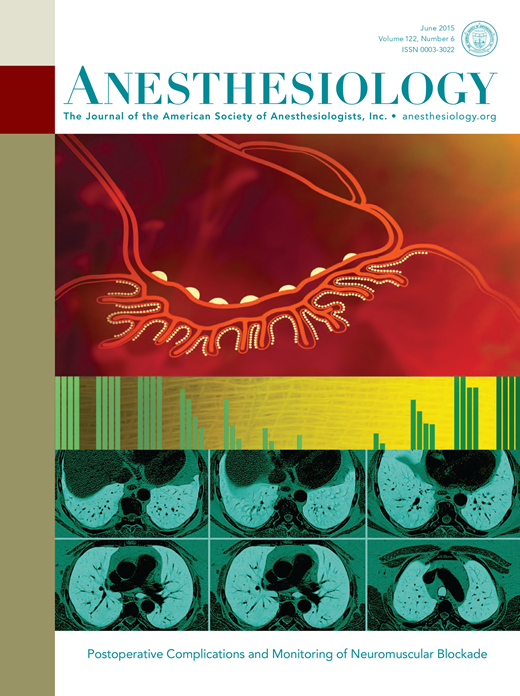护理点异体红细胞清洗对输血相关呼吸系统并发症指标的影响:II期随机临床试验。
IF 9.1
1区 医学
Q1 ANESTHESIOLOGY
引用次数: 0
摘要
背景:输血相关急性肺损伤(TRALI)和输血相关循环负荷(TACO)是导致输血相关发病率和死亡率的主要原因。红细胞(RBC)上清中的可溶性因子可能增加这些并发症的风险。我们假设,在心脏手术的背景下,护理点异体红细胞洗涤可能是一种有效的干预措施,可以减轻可溶性因子升高以及与输血相关的呼吸系统并发症相关的生理反应。方法:这是一项双中心、非盲、随机临床试验,评估在心脏手术期间或当天进行的即时洗液输注与标准的同种异体红细胞输注。通过修改意向治疗进行初步分析。评估的主要结果是肺损伤的中间标记物的变化以及对红细胞输血的心肺生理反应。次要结局包括重症监护病房和住院时间、机械通气和补氧时间、TRALI或TACO的存在以及死亡率。结果154例患者(清洗81例,标准73例)中位年龄66岁,女性77例(50.0%)。手术当日输注异体红细胞单位的中位数(IQR),水洗红细胞组为3.0(2.0 ~ 5.0),标准红细胞组为3.0(2.0 ~ 4.0),差异有统计学意义(p = 0.13)。在任何评估的受体肺损伤生物标志物(所有p值>调整α)中均未发现组间差异。重症监护病房住院时间(中位数[四分位数间距];3.0[2.0-5.0]天和3.0[2.0-4.0]天;P = 0.117)和住院天数(12.0[9.0-17.0]对12.0[9.0-17.0]天;P = 0.801)相似,第28天无呼吸机天数(27.0 [27.0-27.0]vs . 27.0 [26.0-27.0];P = 0.699)和第28天无氧天数(24.0 [19.0-26.0]vs . 24.0 [22.0-26.0];P = 0.400)。TRALI、TACO和急性肾损伤的死亡率和发病率均无显著差异。结论:在接受心血管手术的高危输血患者中,现场清洗异体红细胞输注并不能减轻肺损伤中间标志物的变化或红细胞输注对心肺生理反应的影响,也与临床结果的改善无关。本文章由计算机程序翻译,如有差异,请以英文原文为准。
Impact of Point-of-care allogeneic red blood cell washing on markers of transfusion-related respiratory complications: A phase II randomized clinical trial.
BACKGROUND
Transfusion-related acute lung injury (TRALI) and transfusion-associated circulatory overload (TACO) are leading causes of transfusion-related morbidity and mortality. Soluble factors in red blood cell (RBC) supernatant may increase risk for these complications. We hypothesized that point-of-care allogeneic RBC washing may be an effective intervention to mitigate elevations in soluble factors as well as physiologic responses associated with transfusion-associated respiratory complications in the setting of cardiac surgery.
METHODS
This is a two-center, non-blinded, randomized clinical trial evaluating point-of-care washed versus standard-issue allogeneic RBC transfusions administered during or on the day of cardiac surgery. The primary analysis was performed via modified intention-to-treat. The primary outcomes assessed were changes in intermediate markers of lung injury as well as cardiopulmonary physiologic responses to RBC transfusion. Secondary outcomes included the duration of intensive care unit and hospital stay, durations of mechanical ventilation and oxygen supplementation, presence of TRALI or TACO, and mortality.
RESULTS
Among 154 analyzed patients (81 washed, 73 standard issue), median age was 66 years and 77 (50.0%) were women. The median (IQR) number of allogeneic RBC units transfused on the day of surgery was 3.0 (2.0 - 5.0) in the washed RBC group and 3.0 (2.0 - 4.0) in the standard issue group (p = 0.13). No between-group differences were identified in any of the assessed recipient lung injury biomarkers (all p-values > adjusted alpha). Durations of intensive care unit stay (median [interquartile range]; 3.0 [2.0-5.0] versus 3.0 [2.0-4.0] days; p = 0.117) and hospital length of stay (12.0 [9.0-17.0] versus 12.0 [9.0-17.0] days; p = 0.801) were similar, as were the number of ventilator-free days at day 28 (27.0 [27.0-27.0] versus 27.0 [26.0-27.0]; p = 0.699) and oxygen free days at day 28 (24.0 [19.0-26.0] versus 24.0 [22.0-26.0]; p = 0.400) . No significant differences were noted in mortality rate nor in incidence rates for TRALI, TACO, and acute kidney injury.
CONCLUSIONS
Among patients undergoing cardiovascular surgery with high risk of RBC transfusion, point-of-care washing of allogeneic RBC transfusions did not mitigate changes in intermediate markers of lung injury or cardiopulmonary physiologic responses to RBC transfusion and was not associated with improved clinical outcomes.
求助全文
通过发布文献求助,成功后即可免费获取论文全文。
去求助
来源期刊

Anesthesiology
医学-麻醉学
CiteScore
10.40
自引率
5.70%
发文量
542
审稿时长
3-6 weeks
期刊介绍:
With its establishment in 1940, Anesthesiology has emerged as a prominent leader in the field of anesthesiology, encompassing perioperative, critical care, and pain medicine. As the esteemed journal of the American Society of Anesthesiologists, Anesthesiology operates independently with full editorial freedom. Its distinguished Editorial Board, comprising renowned professionals from across the globe, drives the advancement of the specialty by presenting innovative research through immediate open access to select articles and granting free access to all published articles after a six-month period. Furthermore, Anesthesiology actively promotes groundbreaking studies through an influential press release program. The journal's unwavering commitment lies in the dissemination of exemplary work that enhances clinical practice and revolutionizes the practice of medicine within our discipline.
 求助内容:
求助内容: 应助结果提醒方式:
应助结果提醒方式:


